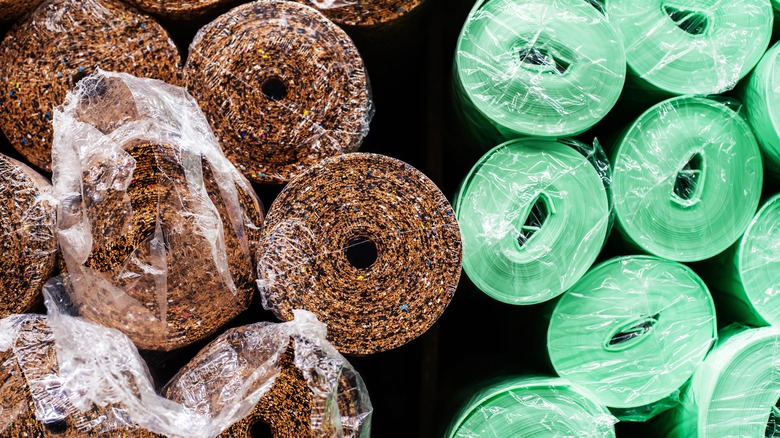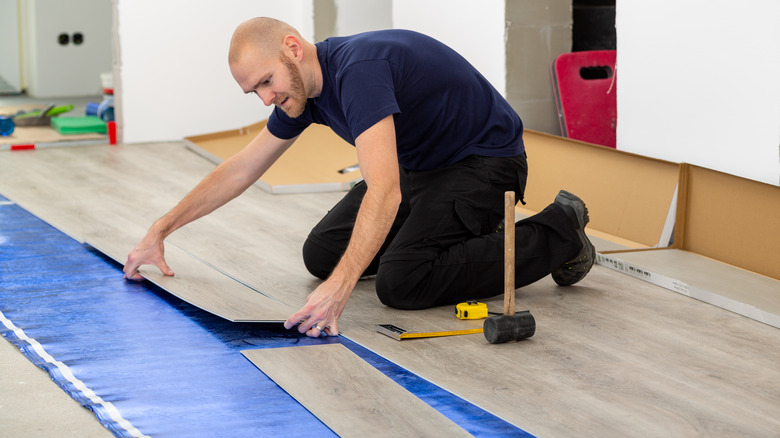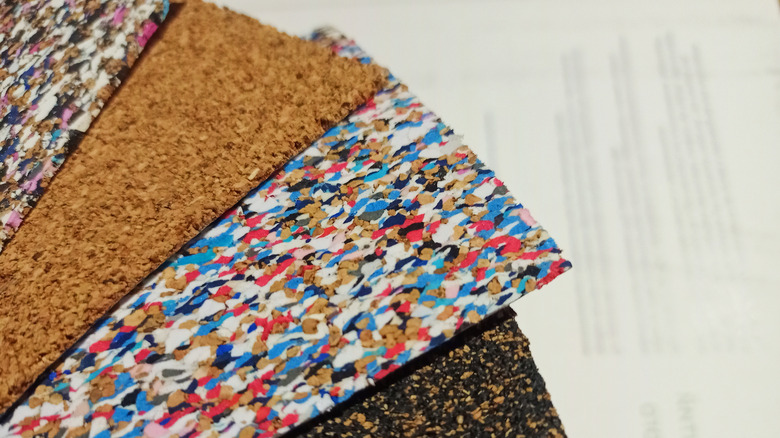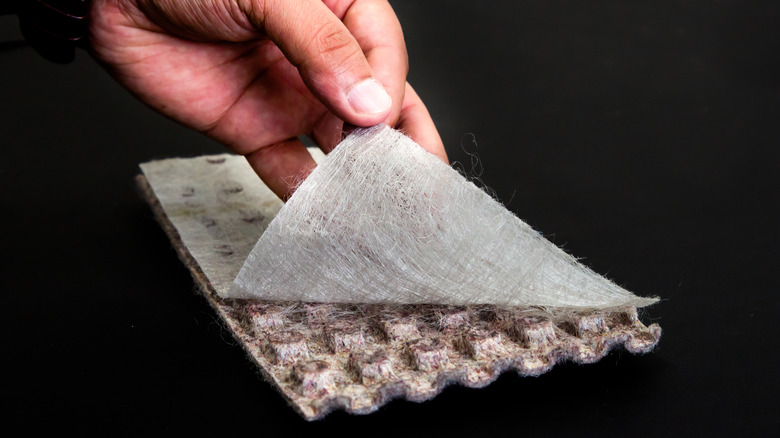The 3 Top Underlayments For Your Laminate Flooring
It's easy to see the benefits of installing laminate flooring. It looks high-end, it's cost-effective to buy and put in, it lasts for ages, and it's available in so many varieties you're sure to find the perfect look for your home. What's harder to appreciate, perhaps, is that without a properly fitting underlayment, many of these benefits fall by the wayside.
According to DIY Geeks, laminate floors depend on an underlayment for their finish and durability. The layer of padding that this crucial element provides can iron out inconsistencies in the subfloor, thus making the locks between the planks smoother and easier to install. In the long term, an under layer also reduces the wear and tear on those planks as people trudge over them day in and day out.
As well as this, per MP Global Products, a quality underlayment gives support to your laminate floor as a barrier to potential moisture and vapors coming up from below. It also acts as a sound reduction mechanism. All of these attributes together contribute towards making laminate flooring a comfortable and livable surface.
When it comes to choosing an underlayment, there are a number of different types, and specifically, three different materials to consider, each with their particular tradeoffs. Here's our guide to the top underlayment options for your laminate flooring.
Foam underlayment
Polyethylene foam is, as FloorSave points out, a cheap and basic option for underlay — although that doesn't mean it's ineffective. For a reasonable price, this easy-to-install underlayment is capable of delivering on a lot of the things you require of a base layer for your laminate floorboards. It gives some protection from noise, cushions footfalls, and will level out the minor bulges and dips in the original subfloor.
However, it's important to note that if you choose a pure foam underlayment, it will not be waterproof. This is the primary drawback to this type of material. Typically, it would be a mistake to use foam underlayment on concrete subfloors, which can bring up dampness from beneath the home, or in rooms with high humidity, such as bathrooms.
Having said that, according to Stories Flooring, polyethylene foam is the most popular underlayment option on the market, providing excellent comfort and performance. Easy to cut, easy to install, and easy on the wallet — foam underlayment has a lot going for it.
Cork underlayment
Cork underlayment is a more natural choice than foam. Because of the fact that it's grown from trees, many people are interested in using it instead of the man-made polyethylene that's the most common underlayment material in use today. According to Zothex Flooring, although cork is a more expensive material per square meter, it has a noise canceling effect superior to that of foam. It is also worth noting that though cork costs more than foam, it is still cheaper than felt, which is another underlayment material prized for its noise-deadening properties.
Cork will, of course, absorb water if exposed to it over time, so it must be protected from dampness and/or humidity by a damp-proof membrane. If adequately protected from moisture, the honeycomb of wooden air pockets that make up the inside of a sheet of cork will deaden sound as well as regulate heat or cold coming through the floorboards. According to Appliance Analysts, one cubic inch of cork can have up to 100 billion air pockets, which makes this natural material a true alternative to the synthetic options on the market. It's up to you to decide if that's worth the increased price or not.
Combination underlayment
This type of laminate flooring underlayment is made up of a combination of two or three different materials. Typically these will be foam, felt, or cork, plus a layer of a damp-proof membrane. According to Flooring Supplies, if you're laying laminate planks over screed or concrete subfloors, then you should use this type of underlayment every time.
BuildDirect also touts the benefits of combination products for rooms with high levels of humidity, such as bathrooms, describing them as ideal for the conditions. Consider that, if you opt instead for an underlayment that does not have any protection from moisture buildup, water can do more than just damage the floor by getting it wet. The unprotected foam or cork layer will soak up the water and expand, cracking the floor or even the walls to either side!
Using hybrid materials doesn't have to be limited to areas with high water content. Mixing materials can be done for many reasons, including upgraded comfort or noise-reduction. However, as you might expect, there will be a corresponding increase in price for using more materials for your underlayment.



